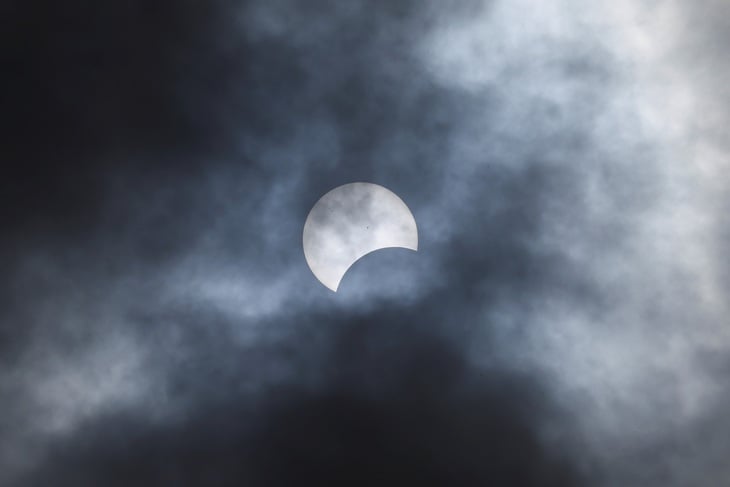
Solar eclipse observed at Niagara Falls, New York City (USA) in 2024 - Photo: REUTERS
On September 15, the Hanoi Astronomical Society (HAS) announced that a partial solar eclipse will take place on September 21 (global time, September 22 Vietnam time).
Only about 16.6 million people in a narrow strip of eastern Australia, New Zealand, sparsely populated islands in the South Pacific and parts of Antarctica, equivalent to about 0.2% of the world's population, will be able to see at least part of this eclipse.
Next October has a supermoon, meteor shower and comets
According to HAS, next October there will be the first supermoon of 2025 (Harvest Moon).
Along with that are two meteor showers Draconids (October 8 and 9) and Orionids (October 22 and 23).
Also a comet will appear at the end of October.
Maximum solar eclipse at the location (60°54' south, 153°30' east) with maximum obscuration of 79.52%.
According to Vietnam time, the specific times of the solar eclipse are as follows:
- 0:29:43 on September 22: Solar eclipse begins (first location to see partial solar eclipse begins).
- 2h41m59s: Maximum solar eclipse.
- 4h53m45s: Eclipse ends (last location to see the eclipse end).
Unfortunately, Vietnam and many other countries will not be able to observe this phenomenon at any stage.
According to HAS, the next solar eclipse that Vietnam can observe will take place on August 2, 2027.
Meanwhile, the lunar eclipse will continue to visit us early next year, specifically a total lunar eclipse on March 3, 2026.
What is a solar eclipse?
A solar eclipse occurs when the Moon moves between the Sun and Earth, blocking the light from the Sun and casting the Moon's shadow on the Earth's surface. People often call this phenomenon "the moon eating the sun".
There are four types of solar eclipses and they are determined by the areas of the Moon's shadow on the Earth's surface.
- Total solar eclipse : Occurs when the Moon completely covers the Sun and forms shadow and penumbra areas on the Earth's surface. A total solar eclipse can only occur when the Moon is around its perigee.
A total solar eclipse can be seen by people standing in the path of the Moon's umbra. A partial solar eclipse can be seen by people who are not in the umbra but are standing in the penumbra.
- Partial solar eclipse : Occurs when the Moon does not completely cover the Sun's disk and only forms a penumbra on the Earth's surface.
- Annular solar eclipse : Occurs when the opposite side of the umbra appears on Earth. The Moon's disk will obscure the central part of the Sun's disk, revealing the outer edge of the Sun in a ring shape. An annular solar eclipse can only occur when the Moon is near aphelion.
- Hybrid eclipses : Very rare. They occur when an annular eclipse turns into a total eclipse.
Source: https://tuoitre.vn/sap-nhat-thuc-viet-nam-co-xem-duoc-mat-trang-an-mat-troi-20250915152218153.htm












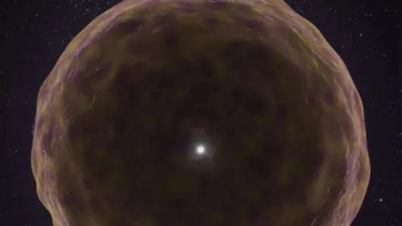


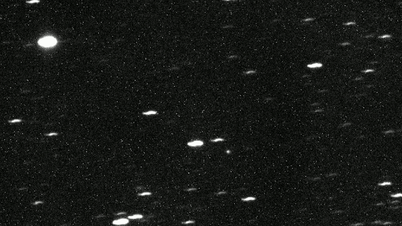
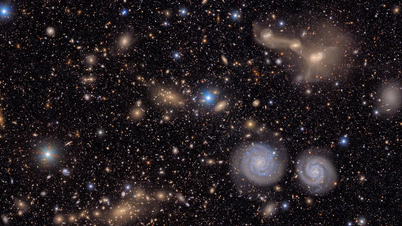
![[Video] Warning of high-tech criminals appropriating assets from cyber security incidents at CIC](https://vphoto.vietnam.vn/thumb/402x226/vietnam/resource/IMAGE/2025/10/1/9e967e621dc240bfbb70e926d503a177)

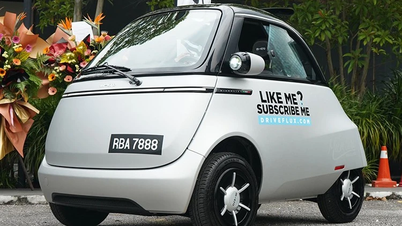
















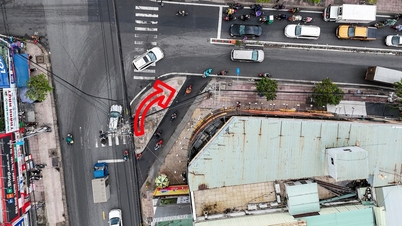
![[Photo] The 1st Congress of Phu Tho Provincial Party Committee, term 2025-2030](https://vphoto.vietnam.vn/thumb/1200x675/vietnam/resource/IMAGE/2025/9/30/1507da06216649bba8a1ce6251816820)
![[Photo] Solemn opening of the 12th Military Party Congress for the 2025-2030 term](https://vphoto.vietnam.vn/thumb/1200x675/vietnam/resource/IMAGE/2025/9/30/2cd383b3130d41a1a4b5ace0d5eb989d)
![[Photo] Panorama of the cable-stayed bridge, the final bottleneck of the Ben Luc-Long Thanh expressway](https://vphoto.vietnam.vn/thumb/1200x675/vietnam/resource/IMAGE/2025/9/30/391fdf21025541d6b2f092e49a17243f)
![[Photo] President Luong Cuong receives President of the Cuban National Assembly Esteban Lazo Hernandez](https://vphoto.vietnam.vn/thumb/1200x675/vietnam/resource/IMAGE/2025/9/30/4d38932911c24f6ea1936252bd5427fa)


































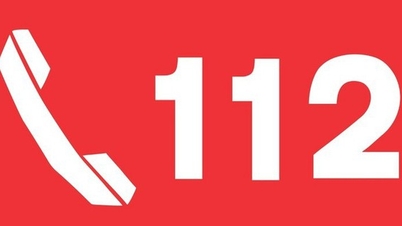





























Comment (0)